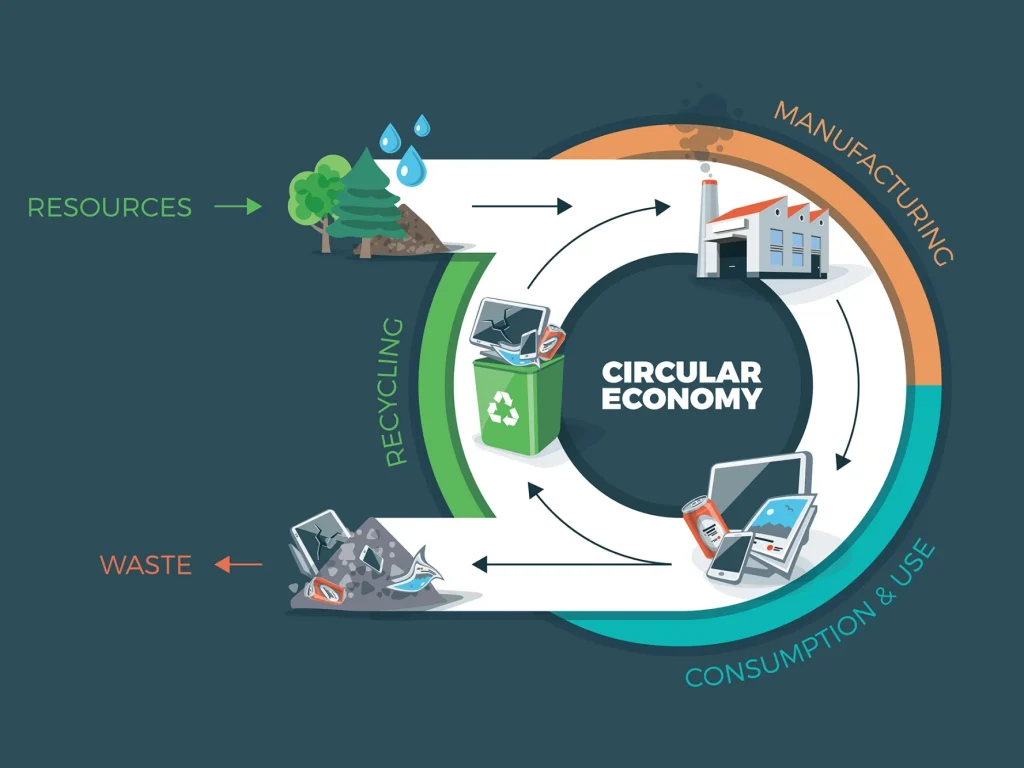Embracing a Circular Economy: A Pathway to Sustainability
August 23, 2023 2023-08-23 9:12
Embracing a Circular Economy: A Pathway to Sustainability
Introduction: In a world where resources are finite and environmental concerns are on the rise, the concept of a circular economy has emerged as a promising solution. This innovative approach seeks to transform our traditional linear consumption model into a sustainable loop that benefits both the environment and the economy. In this article, we’ll explore the exciting concept of the circular economy, its principles, benefits, and how it’s shaping a greener future.
Understanding the Circular Economy: The circular economy is a revolutionary concept that challenges the “take-make-dispose” mentality of our current economic system. It promotes the idea of reusing, recycling, and regenerating materials and products throughout their lifecycle. The goal is to minimize waste, reduce the depletion of resources, and foster a more sustainable way of living.
Key Principles of the Circular Economy:
- Design for Durability: Products are designed to last longer, ensuring they can be used for an extended period before needing replacement.
- Resource Efficiency: Resources are utilized efficiently, reducing waste and conserving valuable materials.
- Reuse and Repair: Emphasis is placed on repairing and reusing products, extending their life and reducing the need for new production.
- Recycling and Regeneration: Materials are recycled and regenerated to create new products, minimizing the extraction of raw materials.
- Collaborative Consumption: Sharing and collaborative platforms allow for shared use of products, reducing individual ownership and excess consumption.
Benefits of Embracing the Circular Economy:
- Environmental Impact: By reducing waste and minimizing resource consumption, the circular economy helps mitigate environmental degradation and climate change.
- Economic Growth: Circular business models create new revenue streams and job opportunities, promoting economic growth and innovation.
- Resource Conservation: It reduces the pressure on finite resources and decreases the reliance on raw material extraction.
- Reduced Pollution: Less waste and pollution contribute to cleaner air, water, and land, creating healthier communities.
- Long-Term Sustainability: The circular economy ensures a more sustainable and resilient future for generations to come.
Real-World Examples: Numerous industries and companies have embraced circular economy principles. Brands are now designing products with recyclable materials, encouraging customers to return used items for recycling. Collaborative platforms allow individuals to share goods, minimizing the need for excessive consumption. Clothing brands are exploring upcycling and repurposing to give new life to old garments.
Conclusion: The circular economy is more than just a buzzword – it’s a transformative concept that has the potential to reshape our world for the better. By shifting our focus from linear consumption to circular practices, we can create a harmonious balance between economic growth, environmental stewardship, and societal well-being. Embracing the circular economy isn’t just a trend; it’s a crucial step towards building a sustainable and thriving future.
To learn more about the circular economy and its impact, check out this insightful video: [Link to the video]
Related Posts
Embracing a Circular Economy: A Pathway to Sustainability
August 23, 2023 2023-08-23 9:12Popular Tags


